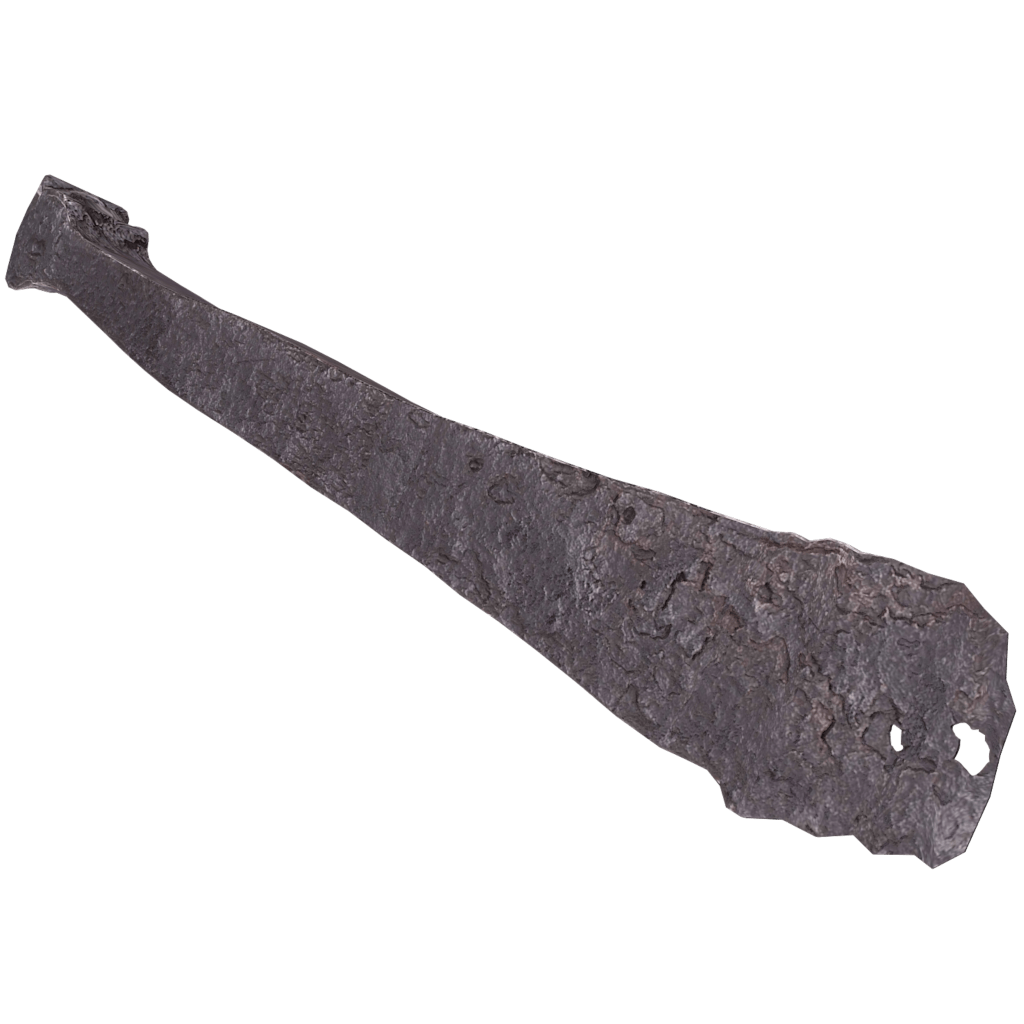
Bars, also known as ‘płacidła’ [proto-currency], are narrow elongated iron bars with a blade on one end and a small hole on the other. A majority of them were forged off a single piece of metal. In such a form they were easy way to transport and store the material. They were used by smiths working far away from iron ore deposits and smelting centres. The bars were very valuable. They could be used as a currency in many transactions.
The bar on display is part of a treasure discovered in the cellar of a Krakow townhouse in 1979 [nineteen seventy nine]. The treasure trove contained more then four thousand bars with the total weight over three and a half tons. In the early Middle Ages the treasure was worth several kilograms of gold.